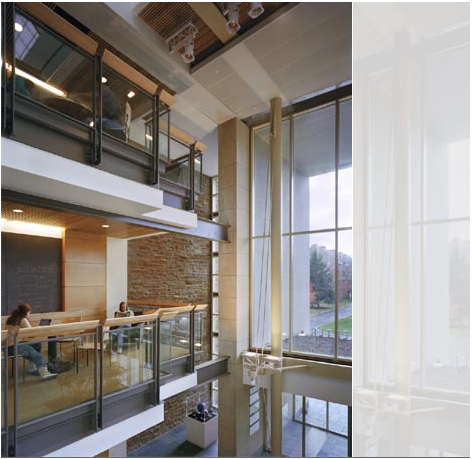Summer Research
* Student(s): Margo Rockwell
Advisor: Michael McCormick
Title: Quantification of the Adsorption of Geobacter sulferreducens on Goethite
Abstract:
Contaminated water, estuarine, and marine sediments are a major public concern because of adverse impacts on aquatic ecosystems and human health (Gruden, 2003). Most of these contaminated sediment sites would benefit from the development of bioremediation strategies. One step in refining bioremediation technology is analyzing the adsorption of bacteria onto mineral surfaces. Geobacter, of the family geobacteraceae, are the predominant Fe(III)-reducing microorganisms found in subsurface environments where Fe(III) reduction is an important process (Leang, 2003). The purpose of this study is to quantify the amount of Geobacter sulferreducens adsorbed onto the surface of goethite in order to determine whether the outer membrane protein (OmcB) is involved in cell adsorption and adhesion. Two types of Geobacter sulferreducens were compared, one being a mutant strain deficient in the gene that encodes for OmcB and the other a wild-type cell. A variety of goethite (a-FeOOH) synthesis methods were compared aiming to create large goethite crystals that could readily be removed from suspension by centrifugation. The Geobacter sulferreducens were separated (in prior studies the cells did not separate from the bacteria) from the goethite by employing differential centrifugation before quantification. The number of cells (Geobacter sulferreducens) which adhered to the adsorbent was quantified using fluorescence microscopy and direct cell counts. The results from this experiment should help in discovering the mechanism of electron transfer from the cytoplasmic membrane of Geobacter sulferreducens to the surface of goethite.
MR's research supported by the GE Foundation.


